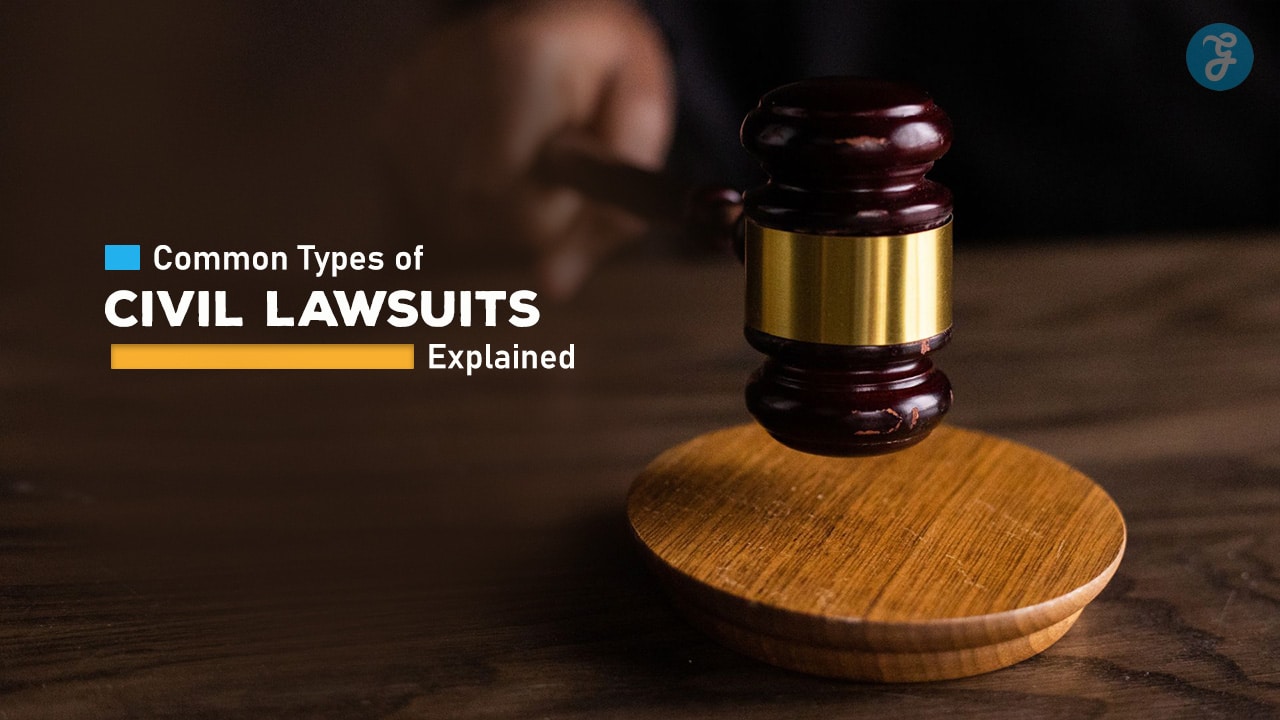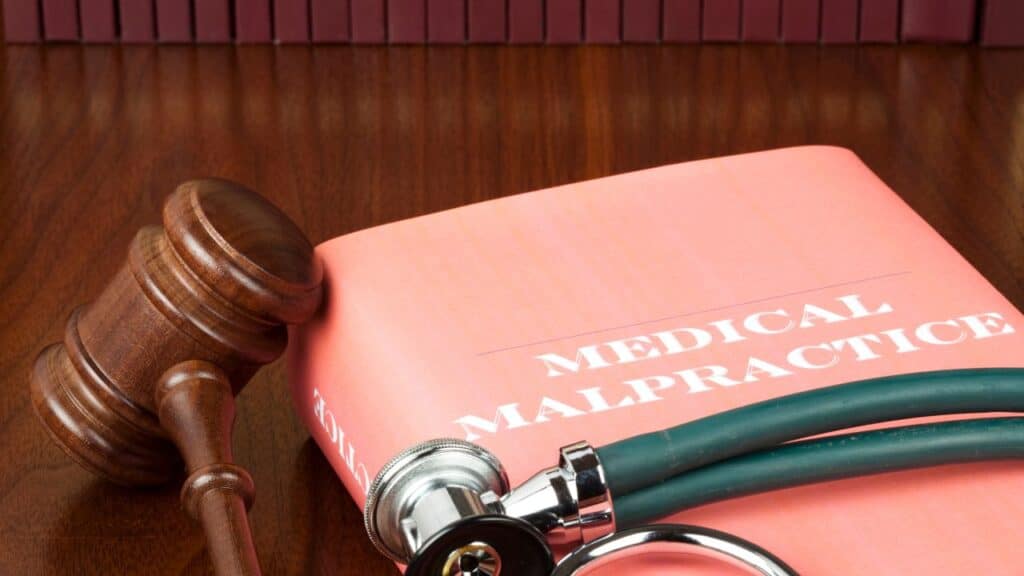Civil lawsuits are a fundamental part of the legal system, dealing with disputes between individuals, organizations, or entities where one party seeks compensation or another form of relief from another party.
These cases typically do not involve criminal charges but instead focus on resolving disputes related to personal harm, financial loss, contracts, or property.
Civil litigation plays a vital role in maintaining social order, protecting individual rights, and ensuring justice through compensation or specific remedies.
In this detailed guide , we will explore the 10 most common types of civil lawsuits, explaining their processes, the legal requirements, and the potential outcomes.
This guide will provide a comprehensive understanding of the most frequent civil disputes and how they are addressed in the legal system.
1. Personal Injury Lawsuits
Personal injury lawsuits are among the most common civil cases.
These lawsuits arise when an individual is harmed due to the negligence, recklessness, or intentional actions of another person or entity.
The injured party, known as the plaintiff, seeks compensation for medical expenses, lost wages, emotional distress, and other damages resulting from the injury.
Common Types of Personal Injury Cases:
- Motor vehicle accidents :
Car, truck, motorcycle, and pedestrian accidents are frequent sources of personal injury claims.
Property owners can be held liable if someone is injured due to unsafe conditions on their property.
- Medical malpractice :
Patients can sue healthcare professionals for injuries caused by negligence, misdiagnosis, or surgical errors.
- Product liability :
Manufacturers, distributors, or retailers can be held responsible if a defective product causes harm.
Legal Process:
In a personal injury lawsuit, the plaintiff must establish that the defendant had a duty of care (eg, a driver has a duty to follow traffic laws), breached that duty (eg, through negligence or recklessness), and caused the plaintiff’s injuries.
Evidence such as medical records, accident reports, witness testimony, and expert opinions is crucial in proving the case.
Personal injury lawsuits often settle out of court, but if the case goes to trial, the court will determine liability and award damages based on the evidence presented.
Outcome:
Compensation for personal injury claims can include:
- Economic damages :
Medical bills , rehabilitation costs, lost wages, and property damage.
- Non-economic damages :
Pain and suffering, emotional distress, loss of enjoyment of life.
- Punitive damages :
In cases of egregious misconduct, the court may award punitive damages to punish the defendant and deter future misconduct.
2. Contract Disputes
Contract disputes arise when one party fails to fulfill its obligations under a legally binding agreement.
Contracts can be written or oral, and when one party (the defendant) breaches the terms, the other party (the plaintiff) may sue to enforce the contract or seek financial compensation for losses caused by the breach.
Common Types of Contract Disputes:
- Business contracts :
Disputes between businesses or between businesses and customers regarding the provision of goods or services.
- Employment contracts :
Breach of employment agreements, including wrongful termination or failure to pay wages.
- Real estate contracts :
Disputes over the sale, lease, or development of property .
- Construction contracts :
Disputes between contractors, subcontractors, or clients over project completion, quality, or payment.
Legal Process:
To prevail in a contract dispute, the plaintiff must prove the following:
- A valid contract existed :
The contract must be legally enforceable, including offer, acceptance, and consideration (something of value exchanged).
- Breach of contract :
The defendant failed to meet their obligations under the contract.
- Damages :
The plaintiff suffered losses due to the breach.
Dispute resolution methods such as mediation or arbitration may be used before litigation.
If the case proceeds to court, the judge may order the breaching party to pay damages or perform specific duties outlined in the contract (specific performance).
Outcome:
Possible outcomes in contract disputes include:
- Compensatory damages :
Monetary compensation for the plaintiff’s losses.
- Specific performance :
A court order requiring the breaching party to fulfill their contractual obligations.
- Cancellation :
The contract may be canceled, releasing both parties from further obligations.
3. Property Disputes
Property disputes arise when two or more parties disagree over the ownership, use, or boundaries of real estate .
These disputes often involve neighbors, landlords and tenants, family members, or business partners, and can range from boundary disagreements to zoning violations.
Common Types of Property Disputes:
- Boundary disputes :
Conflicts over the location of property lines between neighbors.
- Easement disputes :
Disagreements about the right to use part of another person’s property for access or utility purposes.
- Landlord-tenant issues :
Disputes over lease terms, property maintenance, rent payments, or eviction.
- Zoning violations :
Disputes involving non-compliance with local land use regulations, such as building height restrictions or commercial property use in residential areas.
Legal Process:
Property disputes typically involve determining legal ownership, usage rights, and responsibilities.
The plaintiff may need to present deeds, surveys, or title documents to prove their claim.
Expert witnesses, such as surveyors or land appraisers, may also be involved.
In cases involving boundary disputes or easements, the court may order a survey to clarify the property lines.
For landlord-tenant issues, courts consider the terms of the lease and any violations by either party.
Outcome:
Outcomes in property disputes vary depending on the nature of the conflict:
- Resolution of boundary lines :
A court-ordered adjustment of the property boundaries or the granting of easement rights.
- Damages :
Financial compensation for property damage or losses incurred.
- Injunctions :
A court order preventing one party from continuing a certain activity, such as trespassing or violating zoning laws.
4. Divorce and Family Law Disputes
Divorce and family law disputes encompass a wide range of legal issues related to marriage, separation, child custody, and financial support.
These cases can be emotionally charged and require careful legal management to ensure fair outcomes for all parties involved, especially when children are affected.
Common Types of Family Law Disputes:
- Divorce :
The legal termination of a marriage, including the division of marital assets and debts.
- Child custody and visitation :
Determining where children will live and how often each parent will see them.
- Child and spousal support :
Financial support provided to one party for the care of children or to maintain the standard of living for a spouse following divorce.
- Paternity disputes :
Legal cases to establish or dispute the biological father of a child.
Legal Process:
Family law disputes may involve mediation or collaborative law to encourage amicable resolutions.
If no agreement is reached, the case proceeds to court.
In custody cases, the court will prioritize the best interests of the child, considering factors such as the child’s needs, the parents’ ability to provide care, and the child’s relationship with each parent.
Divorce cases typically involve negotiating the division of assets, child support , and spousal support.
Courts aim for an equitable distribution of marital property based on factors such as income, contributions to the marriage, and the length of the marriage.
Outcome:
Family law cases can result in:
- Divorce decrees :
Legal orders finalizing the divorce and specifying the division of assets, custody arrangements, and financial support.
- Custody orders :
Determining physical and legal custody arrangements for children, along with visitation schedules.
- Support orders :
Establishing child and spousal support amounts based on income, needs, and state guidelines.
5. Employment Disputes
Employment disputes involve conflicts between employers and employees regarding workplace rights and obligations.
These cases may arise from wrongful termination, wage violations, discrimination, or breaches of employment contracts.
Employment law ensures that employees are treated fairly and that employers comply with labor regulations.
Common Types of Employment Disputes:
- Wrongful termination :
Claims that an employee was fired without just cause or in violation of their contract.
- Workplace discrimination :
Discrimination based on race, gender, religion, age, disability, or other protected characteristics.
- Harassment claims :
Sexual harassment or hostile work environment claims.
- Wage and hour disputes :
Claims of unpaid wages, overtime, or violations of minimum wage laws.
Legal Process:
In employment lawsuits, the plaintiff must prove that the employer violated labor laws or employment agreements.
This may involve presenting evidence of discriminatory practices, contractual breaches, or violations of wage laws.
Federal and state agencies like the Equal Employment Opportunity Commission (EEOC) may also investigate claims of discrimination or harassment.
If the case goes to trial, the court will examine evidence such as employment records, witness statements, and relevant contracts.
Outcome:
The outcomes in employment disputes can include:
- Financial compensation :
Payment for lost wages, back pay, or damages for emotional distress.
- Reinstatement :
In wrongful termination cases, the employee may be reinstated to their previous position.
- Punitive damages :
In cases of egregious employer misconduct, the court may award additional damages to punish the employer.
6. Medical Malpractice Lawsuits
Medical malpractice lawsuits occur when a healthcare professional’s negligence results in injury or harm to a patient.
These cases involve complex legal and medical issues and typically require expert testimony to establish the standard of care that was breached.
Medical malpractice claims can result from misdiagnosis, surgical errors, or medication mistakes.
Common Types of Medical Malpractice Cases:
- Surgical errors :
Mistakes made during surgery that result in injury or complications.
- Misdiagnosis :
Failing to diagnose or incorrectly diagnosing a medical condition .
- Medication errors :
Prescribing the wrong medication or incorrect dosages.
- Birth injuries :
Injuries to the baby or mother during labor and delivery.
Legal Process:
In a medical malpractice case, the plaintiff must demonstrate that the healthcare provider’s negligence directly caused the injury.
This typically involves proving that the medical professional failed to meet the standard of care expected in their field.
Expert witnesses, such as medical professionals, are often called to testify about the standard of care and whether the defendant’s actions deviated from that standard.
Outcome:
If the plaintiff proves their case, possible outcomes include:
- Compensation for medical expenses :
Covering the cost of corrective surgeries, rehabilitation, or ongoing care.
- Pain and suffering :
Compensation for physical and emotional distress.
- Punitive damages :
In cases of gross negligence, the court may award punitive damages to punish the healthcare provider and prevent future malpractice.
7. Product Liability Lawsuits
Product liability lawsuits arise when a consumer is injured or harmed by a defective or dangerous product.
Manufacturers, designers, or distributors can be held responsible if they fail to ensure the safety of their products before releasing them to the market.
These cases can involve a wide range of products, from automobiles to medical devices to household items.
Common Types of Product Liability Cases:
- Design defects :
Flaws in the product’s design that make it inherently dangerous.
- Manufacturing defects :
Errors during the production process that result in a defective product.
- Failure to warn :
Inadequate warnings or instructions about the potential dangers of using the product.
Legal Process:
To succeed in a product liability lawsuit, the plaintiff must prove that the product was defective, the defect caused the injury, and the plaintiff was using the product as intended.
This often requires expert analysis and testimony to demonstrate the product’s dangers.
Product liability cases may be brought as individual lawsuits or as part of class-action lawsuits if multiple consumers are affected by the same defect.
Outcome:
Successful product liability claims can result in:
- Compensation for medical bills, lost wages, and property damage .
- Product recalls :
Defective products may be recalled to prevent further injuries.
- Punitive damages :
In cases of gross negligence by manufacturers, punitive damages may be awarded to deter future misconduct.
8. Defamation Lawsuits
Defamation occurs when false statements are made about an individual or business, causing harm to their reputation.
Defamation lawsuits can be brought against individuals, organizations, or media outlets, depending on the nature of the false statements.
Defamation is categorized into two types: libel (written defamation) and slander (spoken defamation).
Common Types of Defamation Cases:
- Libel :
False written statements published in newspapers, online platforms, or books.
- Slander :
False spoken statements made in public, broadcast, or private conversations.
- Online defamation :
False statements spread through social media , blogs, or other digital platforms.
Legal Process:
In a defamation lawsuit, the plaintiff must prove that the defendant made a false statement, the statement was communicated to a third party, and it caused harm to the plaintiff’s reputation.
Public figures must also prove that the defamatory statements were made with “actual malice,” meaning the knew the statements were false or acted with reckless disregard for the truth.
Outcome:
If successful, the plaintiff may be awarded:
- Compensation for reputational harm :
Damages for emotional distress, lost income, or business opportunities .
- Injunctions :
The court may order the defendant to retract the false statements or prevent further defamatory comments.
- Punitive damages :
In cases of egregious defamation, the court may award punitive damages to punish the defendant.
9. Class Action Lawsuits
Class action lawsuits allow a group of people with similar claims to file a lawsuit collectively against a defendant, usually a corporation.
Class actions are commonly filed in cases involving defective products, consumer fraud , securities fraud, or environmental harm.
These lawsuits allow plaintiffs to pool their resources and pursue justice on behalf of all affected individuals.
Common Types of Class Action Lawsuits:
- Defective products :
Cases where a product causes harm to many consumers, such as faulty airbags or contaminated food.
- Consumer fraud :
Claims of deceptive business practices, false advertising, or unfair pricing.
- Wage and labor violations :
Cases where employers violate labor laws, such as unpaid overtime or worker misclassification.
Legal Process:
In a class action, the court must first certify the class by determining that the plaintiffs have common claims and that a collective lawsuit is more efficient than individual suits.
One or more lead plaintiffs represent the entire class, and any settlement or verdict applies to all class members unless they opt out.
Class action settlements often involve negotiations between the plaintiffs’ legal team and the defendant.
The court must approve any settlement to ensure it is fair to all class members.
Outcome:
Class action lawsuits can lead to large settlements or judgments, which are distributed among the class members. In addition to compensatory damages, class actions can result in:
- Changes in corporate practices :
Defenders may be required to change business practices to prevent future harm.
- Recalls or corrective actions :
Companies may recall defective products or issue refunds to affected consumers.
10. Intellectual Property Disputes
Intellectual property (IP) disputes involve the unauthorized use, infringement, or theft of intellectual property, such as patents, trademarks, copyrights, or trade secrets.
These disputes are crucial for protecting the rights of creators, inventors, and businesses that rely on their intellectual assets for commercial success.
Common Types of Intellectual Property Disputes:
- Patent infringement :
Unauthorized use of a patented invention or technology.
- Trademark disputes :
Unauthorized use of a trademarked name, logo, or slogan that causes consumer confusion.
- Copyright violations :
Copying or distributing copyrighted works, such as music, books, or software, without permission.
- Trade secret misappropriation :
Theft or disclosure of confidential business information, such as formulas or manufacturing processes .
Legal Process:
In intellectual property cases, the plaintiff must prove ownership of the IP and that the defendant used or copied the IP without permission.
Expert witnesses may be needed to explain technical aspects of patents, designs, or trademarks.
Courts may issue preliminary injunctions to stop the defendant from using the IP while the case is ongoing.
Intellectual property disputes can also involve negotiations over licensing agreements or settlements before trial.
Outcome:
If the plaintiff succeeds, the court may order:
- Injunctions :
Stopping the defendant from using the intellectual property.
- Monetary damages :
Compensating the plaintiff for lost profits or royalties.
- Destruction of infringing goods :
The court may order the defendant to destroy or cease distributing infringing products.
Conclusion
Civil lawsuits are a key mechanism for resolving disputes and ensuring that individuals, businesses, and organizations are held accountable for their actions.
These cases offer those harmed by the wrongdoing of others legal remedies , including personal injury claims and contract disputes.
Understanding the most common types of civil lawsuits helps individuals recognize when legal action may be necessary and what they can expect from the legal process.
Each type of civil lawsuit has its unique procedures, evidentiary requirements, and potential outcomes, but they all serve the purpose of seeking justice and protecting the rights of the parties involved.
By pursuing these legal avenues, plaintiffs can obtain compensation, enforce contracts, or secure their intellectual property, contributing to a fair and orderly society.






































